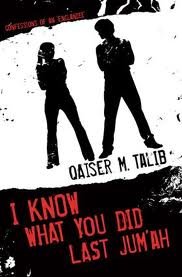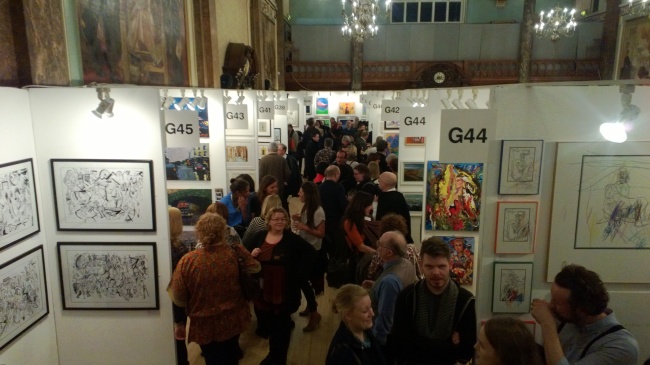A gallery-based practice I always find fascinating is the public talk. A couple of weeks ago I went to a great talk given by Glyn Thompson at the Stanley & Audrey Burton Gallery at University of Leeds called IN FOCUS: The Herbert Read Collection. It was right at the end of their recent exhibition ‘Sir Herbert Read’s Artistic Alliances‘ which ran from 1 September – 20 October 2014.
Contemplating the role of Universities as intermediaries in the cultural economy has become increasingly bound up, for me lately, with theories of institutional power and social influence. Exhibitions can be interpreted as a specific form of cultural production that Bennett (1998) understands as as sites of top-down flows of hegemonic power, something similar to Foucault’s strategies of micro power in his notion of governmentality. Institutions in the public cultural campus or ‘culture complex’ operate, in Bennett’s view, as ‘working surfaces on the social’ through which a kind of public organisation is sustained through the assemblage of objects and discourses within.
Many universities in the UK have a gallery space on their campus and in previous posts on this blog and my own I have mentioned other events at similar university spaces, for example at Lakeside Gallery at University of Nottingham and the Barber Institute at University of Birmingham. Although originally established in the 1970s, the S&AB gallery underwent major programmes of expansion in 1998 and again in 2008, funded first by HEFCE and then with private funds from long-standing friend and benefactor of the University, Mrs Audrey Burton, to become the welcoming and versatile art gallery and display space it is now.
Last year University of Leeds launched an art prize and special exhibition for recent graduates from its undergraduate Fine Art and Design programmes, supported by the Friends of University Art and Music-Leeds (FUAM) of which Mrs Burton had also been an Honorary President. This competition is one of the gallery’s current exhibitions. In the Education room at the other end of the long space is an exhibition of letters and greetings cards sent by Sir Herbert Read in the years after the Second World War, many of which belong to the University’s Special Collections, which houses Read’s archive. This IN FOCUS talk has been organised in conjunction with Special Collections, which are housed in Brotherton Library, the same building as the gallery.

The legacy of Sir Herbert Read (1893-1968), art historian, critic, knight (“services to literature”), anarchist, is currently experiencing some favourable attention. A new film, an immersive study of his life and work has been made by Manchester-based film maker Huw Wahl, supported by the Arts Council. The film is called To Hell With Culture, its provocative title comes from an essay by Herbert Read, originally published in 1941. The son of a farmer in the North Riding of Yorkshire, as a young man Read served in the First World War, rising to the rank of captain and receiving the Military Cross. Later he became known as a poet, an influential art critic, curator at the Victoria and Albert Museum and a committed anarchist. He wrote extensively on art history, theories of art and their importance to society. He co-founded the ICA in London in 1946 and also controversially accepted a knighthood in 1953. He was a modernist, championing the affective and symbolic qualities of art, from ‘primitive’ forms and cave paintings to abstraction and surrealism. The University of Leeds acquired Read’s library, including many rare and personal items, with the help of a Heritage Lottery Fund grant in 1996.
In 1912 he had enrolled at University of Leeds to study Law and economics, but he went to the front and returned profoundly affected by his experiences. According to Glyn Thompson, for a time in the 1920s, Read was Britain’s best recognised war poet.
 Of the items made available for handling or at least taking a closer look at during the IN FOCUS session are two that are of particular interest to the speaker Glyn, who completed his PhD at the University in 2008 on Marcel Duchamp’s ‘art’ practice, or perhaps it is rather more accurate to say his way of articulating meaning.
Of the items made available for handling or at least taking a closer look at during the IN FOCUS session are two that are of particular interest to the speaker Glyn, who completed his PhD at the University in 2008 on Marcel Duchamp’s ‘art’ practice, or perhaps it is rather more accurate to say his way of articulating meaning.
Read had in his collection a ‘Green Box’ (edition of 320 copies) from 1934 and an exhibition catalogue ‘Le Surréalisme en 1947′ that accompanied the Exposition Internationale du Surréalisme, organised by Duchamp and André Breton at the Maeght Gallery in Paris, July–August 1947. The exhibition catalogue has a false breast on the front cover, mounted on a piece of velvet (we are told that the last one sold for $254,000). 
The Green Box (pictured left, also known as The Bride Stripped Bare by her Bachelors Even) contains 94 individual items mostly supposed ‘facsimiles’.
Glyn talks about an outpost of surrealism that existed in London in the late 1930s, on Cork Street, particularly the Guggenheim gallery. This was where the elite of modernism from Britain and France exhibited and ‘hung out’. Herbert Read was part of this set, he was friends with Peggy Guggenheim and Roland Penrose. With the latter he co-founded the ICA in the centre of London, which opened in 1947, to showcase and champion contemporary culture across a wide range of art forms. Details of their first exhibitions can be found here.
Read used his influence to champion the work of Yorkshire artists Henry Moore and Barbara Hepworth. Perhaps he was a cultural intermediary of his time, framing what was available through the use of cultural and social capital and leveraging credibility in networks that connected culture and society?
That would be a good topic for a future talk, but let me return to the one I was here for. Glyn’s talk aims to ‘disrupt the master narrative of Duchamp’, which he explains is commmonly held to be as the grandfather of modern art and the pioneer of art as ‘interruption of the normal’. This art was made exclusively for members of the elite, as work of allegory and rhetoric. “Articulating esoteric subject matter”.
 Duchamp translates information into ‘things’. Glyn says Duchamp’s work is simply a form of embodied meaning. The meanings are encrypted, you have to “do archeology to it” to understand it from the point of view of its circumstances of production. Duchamp’s pieces are “pretexts of erudite discourse”. You have to know the content to appreciate the object, and decoding the elaborate symbolism of a work to receive its message requires interpretative reading.
Duchamp translates information into ‘things’. Glyn says Duchamp’s work is simply a form of embodied meaning. The meanings are encrypted, you have to “do archeology to it” to understand it from the point of view of its circumstances of production. Duchamp’s pieces are “pretexts of erudite discourse”. You have to know the content to appreciate the object, and decoding the elaborate symbolism of a work to receive its message requires interpretative reading.
In Glyn’s analysis of the exhibition catalogue, the square (on the back) and the circle (the false breast) stand for alchemy, while The Green Box is emblematic of The Emerald Tablet, a sacred text of alchemy and hermeticism.
An emblem comprises three forms of simultaneous representation: the visual (superscript) the motto (subscript) and translation (glossing text), so Duchamp’s work is that, rather than an artwork. Sans le saviours. The common herd is not supposed to understand.
Perhaps the multiple readings that are possible of the work of Duchamp and some other surrealists is something that McGuigan’s (2005) work on cognitive and affective communication could be productively applied to, because I although I can’t read their erudite discourse, I nonetheless enjoy the startling and disruptive appearance of readymades and surrealist objects when I encounter them in a gallery. Regardless of this, it is whether the influential circle of Read and his contemporaries gave this art its credibility in London and also in Leeds, via links with the University’s elite community, that is the real issue that I need to keep addressing when it comes to my own work on Universities at cultural intermediaries.
There are couple of opportunities to engage with some of these themes coming up in Leeds this month.
Next Monday, 10th November, the 28th Leeds International Film Festival screens the film To Hell With Culture at 8.30pm and I’m chairing a panel discussion following the screening which will reflect on how Read’s ideas can be applied to contemporary society today. That this takes place at The Hyde Park Picture House, which belongs to the same era as Read (it first opened in 1914), is a happy coincidence!
I have also co-ordinated two additional events taking place at University of Leeds on Wednesday 19th November in conjunction with this screening:
Tour of the Herbert Read Collection, The Brotherton Library, University of Leeds, Weds 19th November, 4-5pm
Richard High leads a guided tour of Herbert Read’s Library and Archive, now housed within the University of Leeds’ Special Collections in the Brotherton Library.
Herbert Read Poetry Reading, University of Leeds, Weds 19th November, 6-7pm
Fiona Becket, Hannah Copley, Jon Glover, Ragini Mohite, Emma Trott and John Whale read from the poems and other writings of Herbert Read, including materials held in the University of Leeds archive.
To book, email gallery@leeds.ac.uk or tel: 0113 3432778
Glyn Thompson has just curated an exhibition called Educating Damien at the Tetley in Leeds, drawing on lecture notes and slides he used when he was teaching History of Art to Damien Hirst on the Foundation Course at Jacob Kramer College in Leeds, during the academic year 1983-84.
These are being shown alongside a series of drawings made during that year by members of Hirst’s cohort and together they form a unique insight into the art education of a major figure of the ‘Young British Artists’ generation.
On Thursday 8th January Glyn Thompson also gives a public talk at the gallery.
___________________________________
Ref:
Bennett (1998) Culture: A Reformer’s Science
McGuigan (2005) The cultural public sphere. European Journal of Cultural Studies, 8:4, 427-443














 Duchamp translates information into ‘things’. Glyn says Duchamp’s work is simply a form of embodied meaning. The meanings are encrypted, you have to “do archeology to it” to understand it from the point of view of its circumstances of production. Duchamp’s pieces are “pretexts of erudite discourse”. You have to know the content to appreciate the object, and decoding the elaborate symbolism of a work to receive its message requires interpretative reading.
Duchamp translates information into ‘things’. Glyn says Duchamp’s work is simply a form of embodied meaning. The meanings are encrypted, you have to “do archeology to it” to understand it from the point of view of its circumstances of production. Duchamp’s pieces are “pretexts of erudite discourse”. You have to know the content to appreciate the object, and decoding the elaborate symbolism of a work to receive its message requires interpretative reading.


















